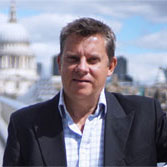The most brilliant day out from Dubai; the oasis city of Al Ain...
Drive east from Dubai or Abu Dhabi to the fabled oasis town of Al-Ain and their tangle of motorways swiftly gives way to flat featureless desert. But there was no movie style mirage of shimmering palms to greet me – as far from being a one camel town, this is a city of 600,000 people in the oil rich Gulf. So instead my first impressions were of numerous kitsch roundabouts with outlandish centre pieces - a giant coffee pot fountain, preening ibis and giraffe statues, and even a pop up waterfall.
Yet moments after parking I’d stepped back in time and was strolling through the ancient oasis with palm fronds swishing and birds chirping overhead, and the soothing sound of running water. In the dappled shade of the palm grove were mud built irrigation toughs known as falaj - a local technique that dates back three millennia.
Al-Ain’s 3,000 acres of date palms felt a world away from the UAE’s coastal bling, and my next stop was an impossibly cute fort. It looked more sand castle than military fortress, but unlike the pastiche heritage of Dubai or Abu Dhabi - where a large Beau Geste like facade is likely to be the entrance to a shopping mall - here it’s the real deal.

It's not a mall or the entrance to a golf course, it's a real 126 year old desert fort
It’s called the Al Jahili Fort and was built in 1891, with high mud brick crenellated walls and a four-story circular tower in one corner. Two immaculately dressed Emiratis’s greeted me as though I were expected. I explained that I had just called in as I saw a small sign saying museum, and with some ceremony, they asked me to follow a white- robed man.
I was led to a sitting area with plush red seats and fierce air conditioning, and presently the man returned to pour me a traditional Arab coffee and offer me a plate of succulent dates.
The museum was free, the hospitality priceless, and inside its corridors I discovered a collection of Wilfred Thesiger photographs. I’ve long been fascinated by the great explorers, and here were wonderful black and white photos of the great British explorer and his Arab friends. He’s still known locally a Mubarak bin London after his crossing of Arabia’s Empty Quarter in the 1940’s.

Local children at the National Museum
By chance a figure emerged from a doorway across the sun blasted courtyard and being nosey, I discovered that it was the National Museum. It’s hard to know just how long it will maintain its current form, but for now it’s an endearing old-style museum with glass cabinets and typed labels. The oasis settlement was a crossroads for the caravan routes between the Gulf States and Oman, and here you’ll find old weapons, jewellery, pottery and coins.
At the other end of the spectrum is the snazzy new Qasr Al Muwaiji Qasral Muwaiji museum, opened in November that showcases the birthplace of Sheikh Khalifa (current ruler of the UAE) using transparent floors and raised walkways. Sheikh Zayed Palace Museum is another corking former home museum; this time dedicated to the revered Sheikh Zayed who founded the UAE.
Surprisingly for such a harsh and remote environment, Hili Archaeological Park, seven miles north of the city are wellhead strongholds and tombs dating back some 5,000 years. On the main tomb I saw delicate carvings of humans and Oryx.

Cute camels yes, but the camel souk isn't for the faint-hearted; it's a noisy smell meat market too
Local wildlife is on view at the Camel Souk, which is unromantically parked behind the Bawadi Mall, and the Al Ain Zoo, big on conservation, is the place to view the beautiful Arabian Oryx – actually in the world’s largest man made safari park. The new Sheikh Zayed Desert Learning Centre is here too – a state of the art building with superb displays and a space age auditorium.
Unlikely as it seems, I found a fabulous mountain road out here in the middle of nowhere. A local gave me exquisite directions to a petrol station – perhaps echoing the need for precise directions to wells in days gone by – and recommended I should drive up Jebel Hafeet.

The ludicrously high spec road to the top of Jabel Hafeet
Jebel is the local word for mountain, and although its craggy 4,050ft bulk is right on the outskirts of Al-Ain, it was lost to me in the heat haze until he pointed it out.
I soon found myself in Top Gear heaven on a three-lane highway switchbacking its way to the summit. At the top I parked up, grabbed a soft drink from a stall and marvelled at the sprawling town surrounded by fiery desert that is Al-Ain.
One more thing...
Temperatures reach a frazzling forty plus degrees in summer – and even the high twenties in mid winter – so I'd suggest doing as the locals do and savour the cool of sunset. You could stroll to a café or a picnic in a park, but my favourite option is the superb mountainside terrace of the Mercure Grand, about a mile from the summit of Jebel Hafeet.

Nightime view of the Jebal Hafeet road snaking down the side of the mountain
***
Getting there: the vast majority of tourists heading to Al Ain simply drive there from Abu Dhabi or Dubai.
Further information: see the Al Ain section of the Visit Abu Dhabi Website.





